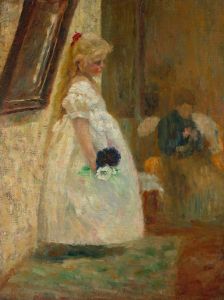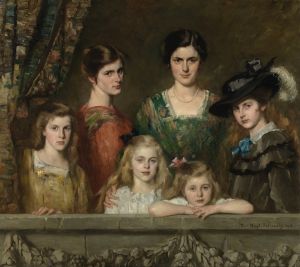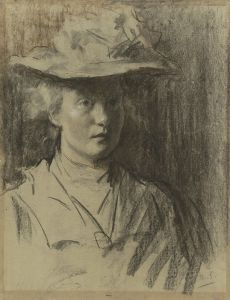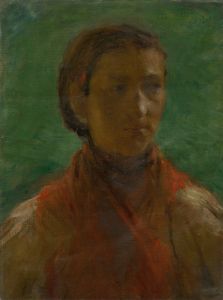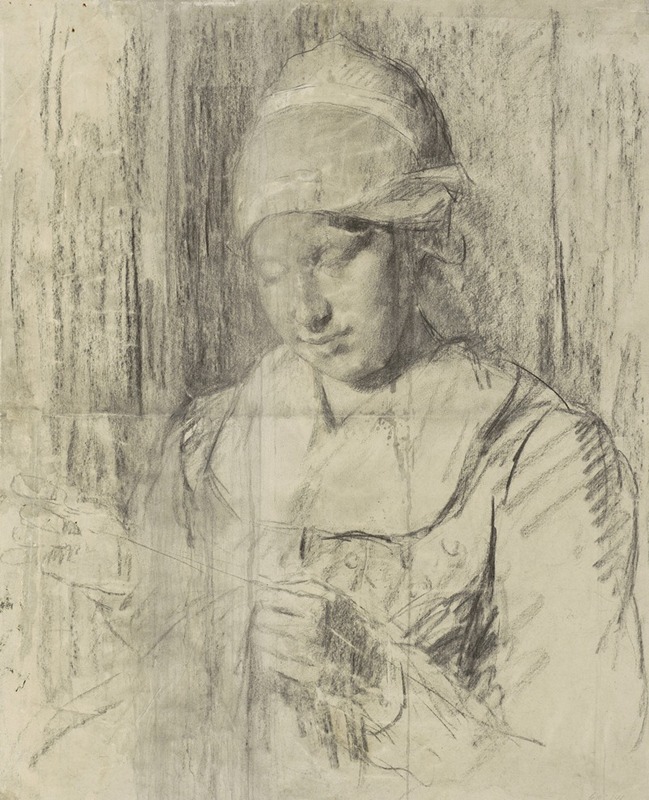
Studie van een weesmeisje
A hand-painted replica of Thérèse Schwartze’s masterpiece Studie van een weesmeisje, meticulously crafted by professional artists to capture the true essence of the original. Each piece is created with museum-quality canvas and rare mineral pigments, carefully painted by experienced artists with delicate brushstrokes and rich, layered colors to perfectly recreate the texture of the original artwork. Unlike machine-printed reproductions, this hand-painted version brings the painting to life, infused with the artist’s emotions and skill in every stroke. Whether for personal collection or home decoration, it instantly elevates the artistic atmosphere of any space.
Thérèse Schwartze was a renowned Dutch portrait painter known for her ability to capture the essence and character of her subjects with remarkable precision and sensitivity. One of her notable works is "Studie van een weesmeisje" (Study of an Orphan Girl), which exemplifies her skill in portraying human emotion and depth.
Thérèse Schwartze was born on December 20, 1851, in Amsterdam, into a family with a strong artistic background. Her father, Johan Georg Schwartze, was a painter, and her mother, Maria Elisabeth Therese Herrmann, was also involved in the arts. This environment undoubtedly influenced her early interest and development in painting. Schwartze received formal training from her father and later studied under Gabriel Max in Munich, which helped refine her technical skills and artistic vision.
"Studie van een weesmeisje" is a poignant representation of an orphan girl, a subject that Schwartze approached with empathy and insight. The painting is characterized by its realistic depiction and the emotional depth conveyed through the girl's expression and posture. Schwartze's use of light and shadow, along with her attention to detail, brings a lifelike quality to the portrait, allowing viewers to connect with the subject on a personal level.
The painting reflects Schwartze's mastery in capturing the subtleties of human emotion. The orphan girl's expression is both vulnerable and resilient, suggesting a narrative of hardship and endurance. Schwartze's ability to convey such complex emotions through her brushwork is a testament to her skill as a portrait artist. The choice of subject matter also highlights Schwartze's interest in portraying individuals from various social backgrounds, offering a glimpse into the lives of those who were often overlooked in society.
Throughout her career, Thérèse Schwartze was celebrated for her portraits of prominent figures, including members of the Dutch royal family and other notable personalities of her time. However, works like "Studie van een weesmeisje" demonstrate her versatility and commitment to capturing the human condition in its many forms. Her portraits were not just about physical likeness but also about revealing the inner life of her subjects.
Schwartze's contributions to the art world were recognized during her lifetime, and she received numerous accolades for her work. She was a member of several prestigious art societies and exhibited her paintings widely, gaining international acclaim. Her legacy continues to be appreciated for its technical excellence and emotional depth.
"Studie van een weesmeisje" remains an important work within Schwartze's oeuvre, exemplifying her ability to blend technical skill with emotional resonance. The painting serves as a reminder of the artist's dedication to portraying the dignity and humanity of her subjects, regardless of their social status. Through her art, Thérèse Schwartze offered a window into the lives of those she painted, capturing moments of vulnerability and strength with compassion and insight.






